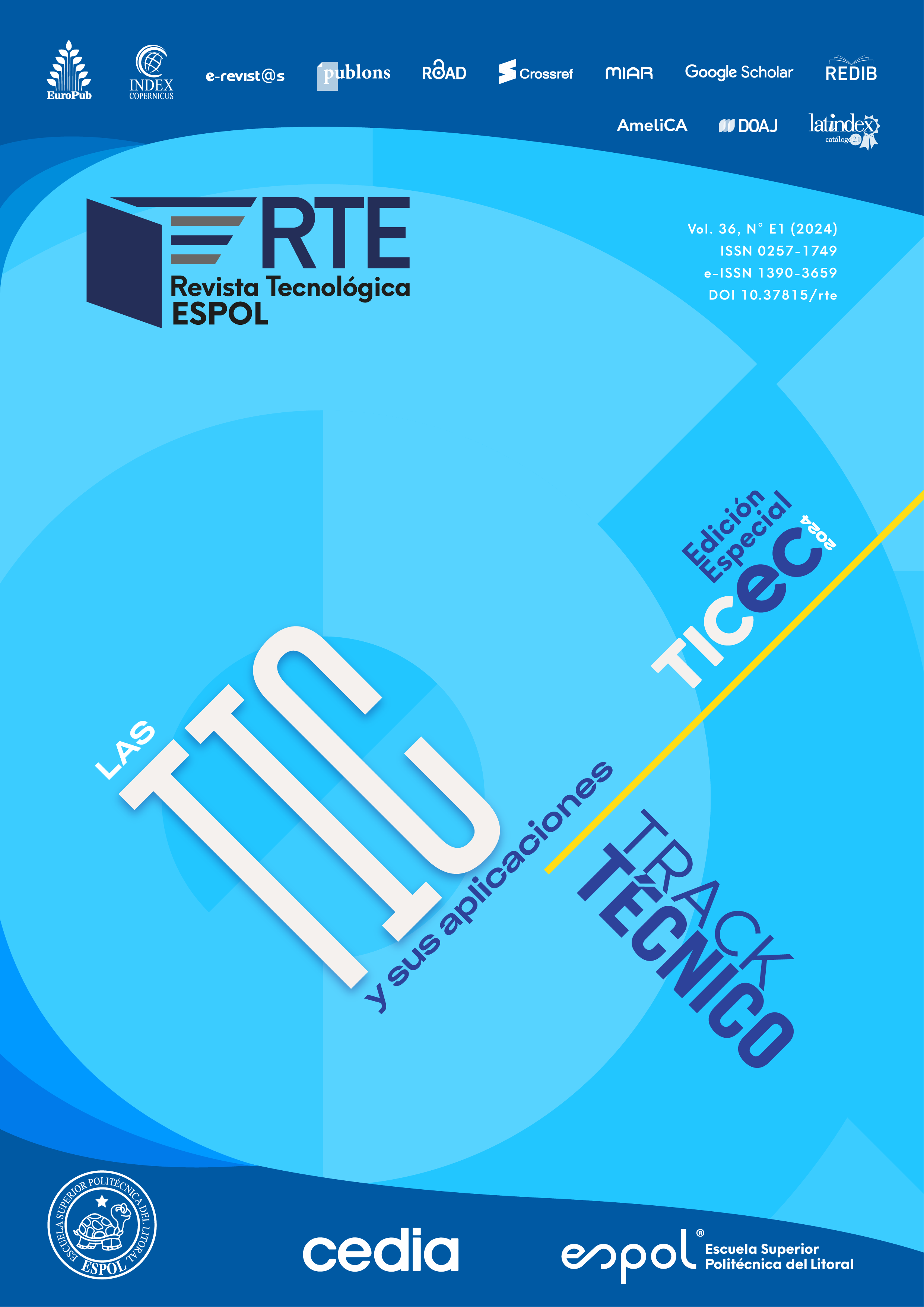In international trade, choosing the ideal supplier can be a challenge. Against this background, it is mandatory to identify the countries from which the import of a certain good is most appropriate. Therefore, this paper proposes a model that allows for the analysis and visualization of cost data for imports into Ecuador from 2008-2018. To achieve this, the existing information on imports was analyzed by reviewing the related literature. Then, the K-means algorithm was applied to group countries by tariff heading, considering the FOB value and import costs. Finally, a visualization interface facilitates decision-making based on the obtained information. Consequently, the proposed model is useful for decision-making in imports because it allows data analysis from all countries in conjunction with imported goods, proving to be applicable to a wide range of companies.

This work is licensed under a Creative Commons Attribution-NonCommercial 4.0 International License.
References
Banco Central del Ecuador. (2023). Comercio Exterior.
Batarseh, F., Gopinath, M., Nalluru, G., & Beckman, J. (2019). Application of machine learning in forecasting international trade trends. ArXiv Preprint ArXiv:1910.03112.
Bonaime, A., Gulen, H., & Ion, M. (2018). Does policy uncertainty affect mergers and acquisitions? Journal of Financial Economics, 129(3), 531–558.
Bornal, D. R., Silvestrini, M. M., Pio, L. A. S., Costa, A. C., Peche, P. M., & Ramos, M. C. P. (2021). Brazilian position in the international fresh fruit trade network. Revista Brasileira de Fruticultura, 43, e–021.
Chambers, J. M. (2018). Graphical methods for data analysis. Chapman and Hall/CRC.
Dankevych, V., Dankevych, Y., & Pyvovar, P. (2018). Clustering of the international agricultural trade between Ukraine and the EU. Management Theory and Studies for Rural Business and Infrastructure Development, 40(3), 307–319.
Dar, Q., Dar, G. F., Ma, J.-H., & Ahn, Y.-H. (2020). Visualization, economic complexity index, and forecasting of South Korea international trade profile: a time series approach. Journal of Korea Trade, 24(1), 131–145.
Dubey, R., Gunasekaran, A., Childe, S. J., Fosso Wamba, S., Roubaud, D., & Foropon, C. (2021). Empirical investigation of data analytics capability and organizational flexibility as complements to supply chain resilience. International Journal of Production Research, 59(1), 110–128.
Hsu, H.-H., Hsieh, C.-W., & others. (2010). Feature Selection via Correlation Coefficient Clustering. J. Softw., 5(12), 1371–1377.
Kim, J., Jo, I.-H., & Park, Y. (2016). Effects of learning analytics dashboard: analyzing the relations among dashboard utilization, satisfaction, and learning achievement. Asia Pacific Education Review, 17, 13–24.
Kim, S., Ku, S., Chang, W., & Song, J. W. (2020). Predicting the direction of US stock prices using effective transfer entropy and machine learning techniques. IEEE Access, 8, 111660–111682.
Kodinariya, T. M., Makwana, P. R., & others. (2013). Review on determining number of Cluster in K-Means Clustering. International Journal, 1(6), 90–95.
Liu, H., Chen, X., Wang, Y., Zhang, B., Chen, Y., Zhao, Y., & Zhou, F. (2021). Visualization and visual analysis of vessel trajectory data: A survey. Visual Informatics, 5(4), 1–10.
Medina Lopez, D. S., Orellana, M., Tonon Ordóñez, L. B., & Zambrano-Martinez, J. L. (2023). Modelo Visual del Comercio Externo en Exportaciones Ecuatorianas. Revista Tecnológica - ESPOL, 35(2), 143–156. https://doi.org/10.37815/rte.v35n2.1051
Pacini, H., Shi, G., Sanches-Pereira, A., & da Silva Filho, A. C. (2021). Network analysis of international trade in plastic scrap. Sustainable Production and Consumption, 27, 203–216.
Ponlaem, K., Kaewsompong, N., Maneejuk, P., & Sirisrisakulchai, J. (2021). Impact of Economic Policy Uncertainty on Thailand Macroeconomic Variables. Behavioral Predictive Modeling in Economics, 437–451.
Rahim, T., Ibrahim, M., Shah, T. A., & Mehmood, W. (2023). Impact of Foreign Trade on Economic Growth: Empirical Evidence from Pakistan. Journal of Policy Research, 9(1), 188–195.
Sehgal, M., & Bhargava, D. (2018). Knowledge mining: an approach using comparison of data cleansing tools. Journal of Information and Optimization Sciences, 39(1), 337–343.
SIKOS T, T., & Meirmanova, A. (2020). Geo-based visual network analysis of export and import patterns in international wheat trade.
Simić, D., Svirčević, V., Sremac, S., Ilin, V., & Simić, S. (2016). An efficiency k-means data clustering in cotton textile imports. Proceedings of the 9th International Conference on Computer Recognition Systems CORES 2015, 255–264.
Sinaga, K. P., & Yang, M.-S. (2020). Unsupervised K-means clustering algorithm. IEEE Access, 8, 80716–80727.
Tâu, N., & Sharfeldin, I.-M.-M. (2021). Abordarea teoretică a mediului internațional de afaceri. Administrarea Publică, 109(1), 113–126.
Windarto, A. P. (2017). Implementation of data mining on rice imports by major country of origin using algorithm using k-means clustering method. International Journal of Artificial Intelligence Research, 1(2), 26–33.
Wulandari, L., & Yogantara, B. O. (2022). Algorithm analysis of K-means and fuzzy C-means for clustering countries based on economy and health. Faktor Exacta, 15(2).







